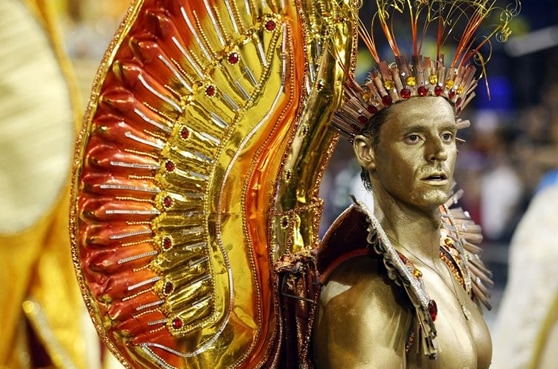
Brazil Carnival
History of Carnival in São Paulo
The origin and traditions of Carnival in Sao Paulo.
It can be safely said that the Brazilians are the undisputed champions when it comes to celebrating the Carnival. The sheer magnitude and finesse of these parades has attracted millions of visitors to São Paulo, Rio de Janeiro, Olinda and other cities in search of a true Carnival experience. The spirit of the Carnival is as vibrant in São Paulo as any other Brazilian Carnival hotspot.

Afro-Brazilian Culture
Like most other Carnivals, the Carnival in São Paulo has its Afro-Brazilian roots. Over the years, the costumes and overall themes presented by various groups have been rewarded for their creativity, imbibing a competitive spirit in the locals, at the same time giving the world an opportunity to enjoy the greatest extravaganza on earth.
The Carnival in São Paulo is similar to the one in Rio with the main competition held at a Sambadrome. The parades feature samba schools that are associates of the Independent Sao Paulo Samba School League or LIGASP. 13 samba schools vie for the prestigious top position at the Anhembi Sambadrome every year along with two afoxés groups, which are groups with Afro-Brazilian roots.
Popular Samba Groups
Many of the current samba schools such as Gavioes da Fiel began as cheerleaders at soccer matches in Sao Paulo stadiums. Primeira Sao Paulo was the first samba school to be established in the city in 1935. For a decade, competition was restricted to small tournaments. However, samba schools began to officially compete in 1950. Samba groups like Vai-Vai (Go-Go) and Camisa Verde e Branco became samba schools in the early 1960s. The first official parade featuring the samba schools was held on Avenida Sao Joao in 1968.
Anhembi Sambadrome
With the popularity of samba schools, the Grupo de Acesso was created where new schools were admitted based on certain criteria of excellence. Over the years, the Carnival in Sao Paulo became increasingly popular. The city soon followed Rio with the construction of the Anhembi Sambadrome in 1991, designed by the same architect of Rio’s Sambadrome, Oscar Niemeyer. The Sambadrome is 530 m long and 14 m wide with famous artists such as Carlos Santana and Elton John gracing the stage on several occasions. Ever since 1991, the Anhembi Sambarodme plays host to the Carnival in Sao Paulo with over 30,000 spectators joining in the week long celebrations.
Carnival Balls the Parties Continue
During the Carnival week, several formal dances or Carnival balls are held throughout the city, especially on Carnival Saturday. Although the concept of Carnival balls was established in Italy, Rio and Sao Paulo soon became popular hotspots with each event becoming a full-blow extravaganza that attracts millions of international tourists each year.